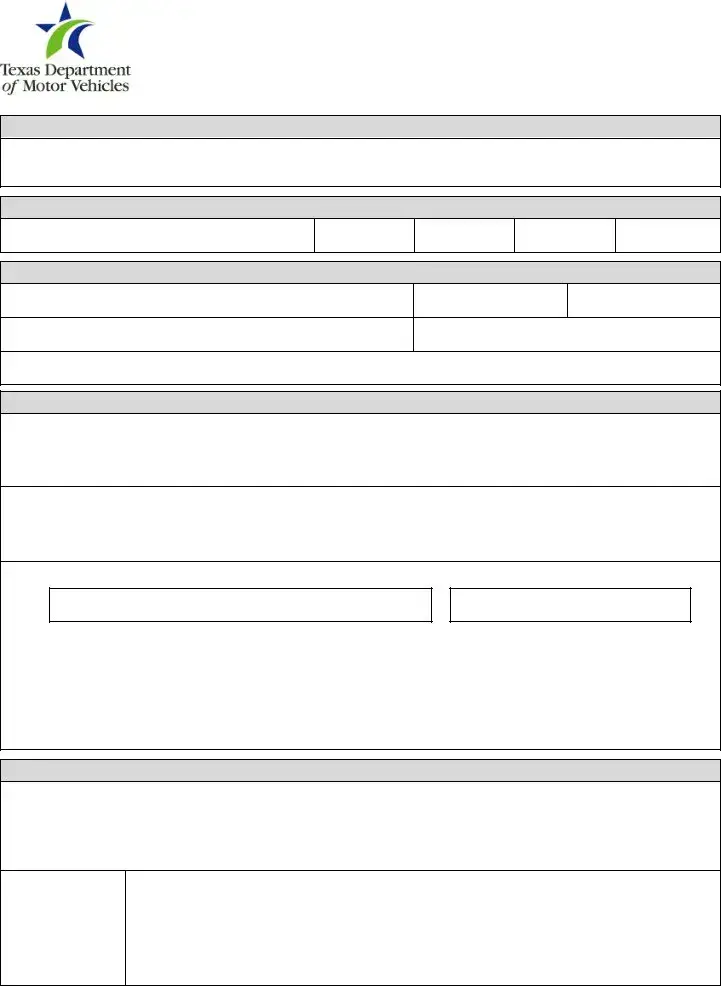What is the VTR-264 form used for?
The VTR-264 form is a specific document required when a motor vehicle has been repossessed. It helps to officially record the details of the repossession and is submitted to the county tax assessor-collector's office. This is necessary for facilitating the transfer of the vehicle's title to a new owner.
Who needs to fill out the VTR-264 form?
The lienholder or their authorized agent must complete the VTR-264 form. This person is typically someone representing the financial institution that financed the vehicle or a dealer who has a security agreement in place with the owner of the vehicle.
Are there any specific requirements for filling out the form?
Yes, all fields on the VTR-264 form are mandatory. This includes information about the vehicle itself, such as its make, model, and Vehicle Identification Number, as well as details about the lienholder, like their name and contact information. Accurate completion of this form is crucial for ensuring the repossession is properly documented.
What documentation do I need to attach to the VTR-264 form?
This depends on the method of repossession selected. For instance, if the lienholder is listed on the original title, they may need to attach a certified copy of the security agreement. If the vehicle was repossessed under a writ of sequestration, the original or a certified copy of the Sheriff's Bill of Sale must be included. Each method has specific requirements that need to be followed.
What information is included in the vehicle section of the form?
The vehicle section requires the Vehicle Identification Number (VIN), year, make, body style, and model. This information is essential for properly identifying the vehicle in question and ensuring that the correct title is transferred.
Can the lienholder directly transfer the title of the repossessed vehicle to a new purchaser?
Yes, if the lienholder is recorded on the Texas title, they can reassign the title directly to a new owner. However, if they are not listed, they must first apply for a new Texas title in their name using the certified copy of the security agreement before transferring ownership.
What are the consequences of falsifying information on the VTR-264 form?
Falsifying information on the VTR-264 form is considered a serious offense under state law. Specifically, it is classified as a third-degree felony. This emphasizes the importance of accuracy and honesty when completing the document.
Do I need to have the form notarized?
Yes, the VTR-264 form requires notarization. The authorized agent must sign the form in the presence of a notary public, who will then verify the identity of the signer and confirm that the statements made in the form are true and correct. This adds an extra layer of legitimacy to the document.
Where should the completed VTR-264 form be submitted?
The completed VTR-264 form must be submitted to the county tax assessor-collector's office. It needs to accompany any other required documents at the time of title transfer. This ensures that all necessary paperwork is in order, allowing for a smooth transfer process.

